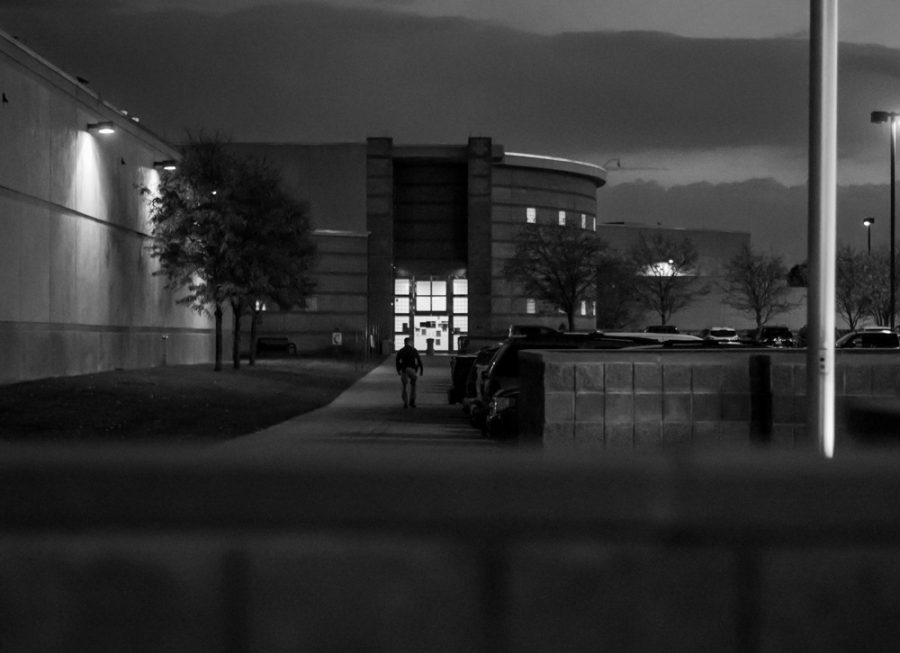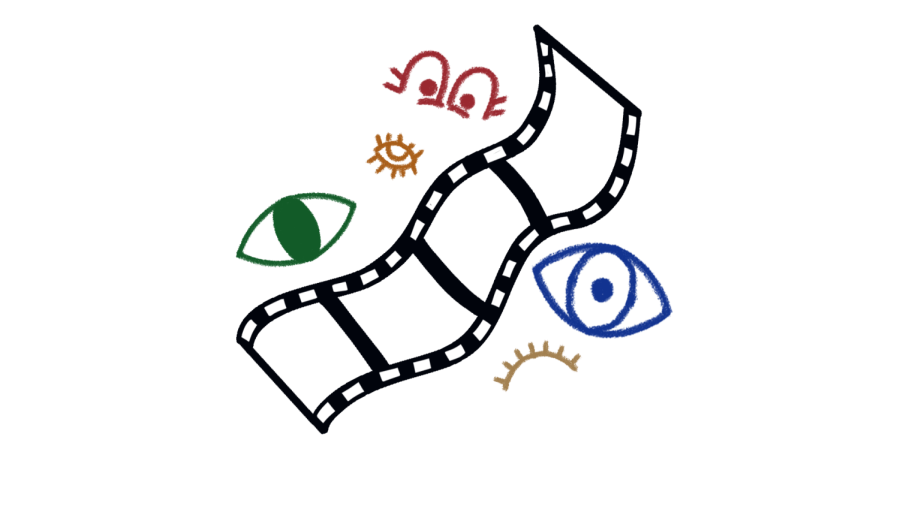Van Wagenen: With Liberty and Justice for All
A police officer enters the Salt Lake Metro Jail in South Salt Lake City on Election Day, Nov. 3, 2020. (Photo by Jack Gambassi | The Daily Utah Chronicle)
March 10, 2023
On Aug. 18, 2022, Gov. Spencer Cox pleaded with Utahns to do their part for suicide prevention. He discussed personal battles with suicidal ideation and begged those facing self-harm and suicidal thoughts to stay and get the necessary help.
But what about suicides in correctional facilities?
H.B. 259, sponsored by Carol Spackman Moss, is the only bill in Utah’s 2023 General Legislative Session discussing suicide directly. The bill would mandate the implementation of suicide barriers on the upper floors of county jails to prevent an individual from jumping to their death.
While H.B. 259 aims to prevent suicides within correctional facilities, it does not fix any fundamental problems of the U.S. incarceration system, nor does it address the mental health issues that many incarcerated people face.
From overcrowding and sparse resources to wrongful convictions, the U.S. prison system is fundamentally broken and contributes to mental health problems among the incarcerated.
Utah Barriers
The American prison system is a business run by influential people who stand to lose too much money and power if changes are made to improve it. As a result, the system continues to break down and often drags the incarcerated down with it. We see it across the country and right here in Utah.
The leading cause of death in Utah’s jails and prisons is suicide, as detailed in a report from Utah’s Commission on Criminal and Juvenile Justice. Utah has one of the highest suicide rates in the country, reflected in the state’s prison suicide rate of 80 per 100,000 inmates versus the national average of 43 per 100,000.
While H.B. 259 could decrease these numbers, the bill’s measure only addresses one method by which an incarcerated person can commit suicide. Instead, we should be focused on the deeply rooted problems that harm an incarcerated individual’s mental health, which involves turning the U.S. prison system on its head.
What we are doing now is not humane.
Necessary Rights
Justice does not equal withholding fundamental human rights. People who are incarcerated deserve rehabilitation and safe spaces. We can and should be doing more to prevent suicides in the system.
The list of potential improvements is well established: educating staff members on inmate mental health and suicide warning signs, stopping social isolation as a form of punishment, giving inmates more access to natural light and spending more time and money on cognitive behavioral therapy.
Correctional facility staff must be educated on inmate suicide and its preventative measures, just like non-incarcerated people are asked to look after each other.
“Soft cells and suicide smocks and medical monitoring cannot substitute for a caring, observant correctional officer,” wrote Shannon Pieper, senior director of marketing content for Lexipol, a “provider of policy, training and wellness support for first responders and government leaders.”
There are also physical prison conditions that can be modified to improve the lives of the incarcerated. For one, we can get rid of inhumane social isolation. It promotes lasting mental harm and encourages recidivism. According to a study done by the Prison Policy Initiative, social isolation as a form of punishment increases the odds of premature death among those who experienced it.
In addition, increasing the opportunities an incarcerated person has to receive natural light boosts mental and emotional wellness, as well as prison morale. Studies done by the U.S. Department of Justice have shown for decades that providing a good light experience, both natural and artificial, enhances morale, safety and security.
The Case for CBT
Quite possibly the most important improvement could be the implementation of cognitive behavioral therapy. An effective form of treatment, this form of therapy has proven to reduce suicidal behavior in both the general population and the incarcerated. A study funded by the National Institute of Health concluded that “the targeted provision of cognitive behavioral therapies for the most vulnerable may help to contribute to the complex challenge of prison suicide prevention.”
Being incarcerated is stressful. Incarcerated individuals may be facing any number of overwhelming problems such as addiction, preexisting mental disorders, separation from loved ones and possible financial ruin — not to mention having their identity reduced to a prisoner ID number.
If offered in prisons, cognitive behavioral therapy focuses on giving inmates something to live for. This form of therapy would give inmates the necessary tools to cope with and heal from the burdens they carried into their time behind bars and the experiences they face while on the inside.
I am not proposing letting criminals run free. I am not proposing luxuries or special treatment in prisons. Nor am I suggesting this bill is useless. I am calling attention to a severely broken system that needs revision. The Pledge of Allegiance concludes, “with liberty and justice for all.” But we must consider the truth behind that phrase. I don’t see liberty and I don’t see justice.
If anything, this bill is a Band-Aid over a gaping wound.








